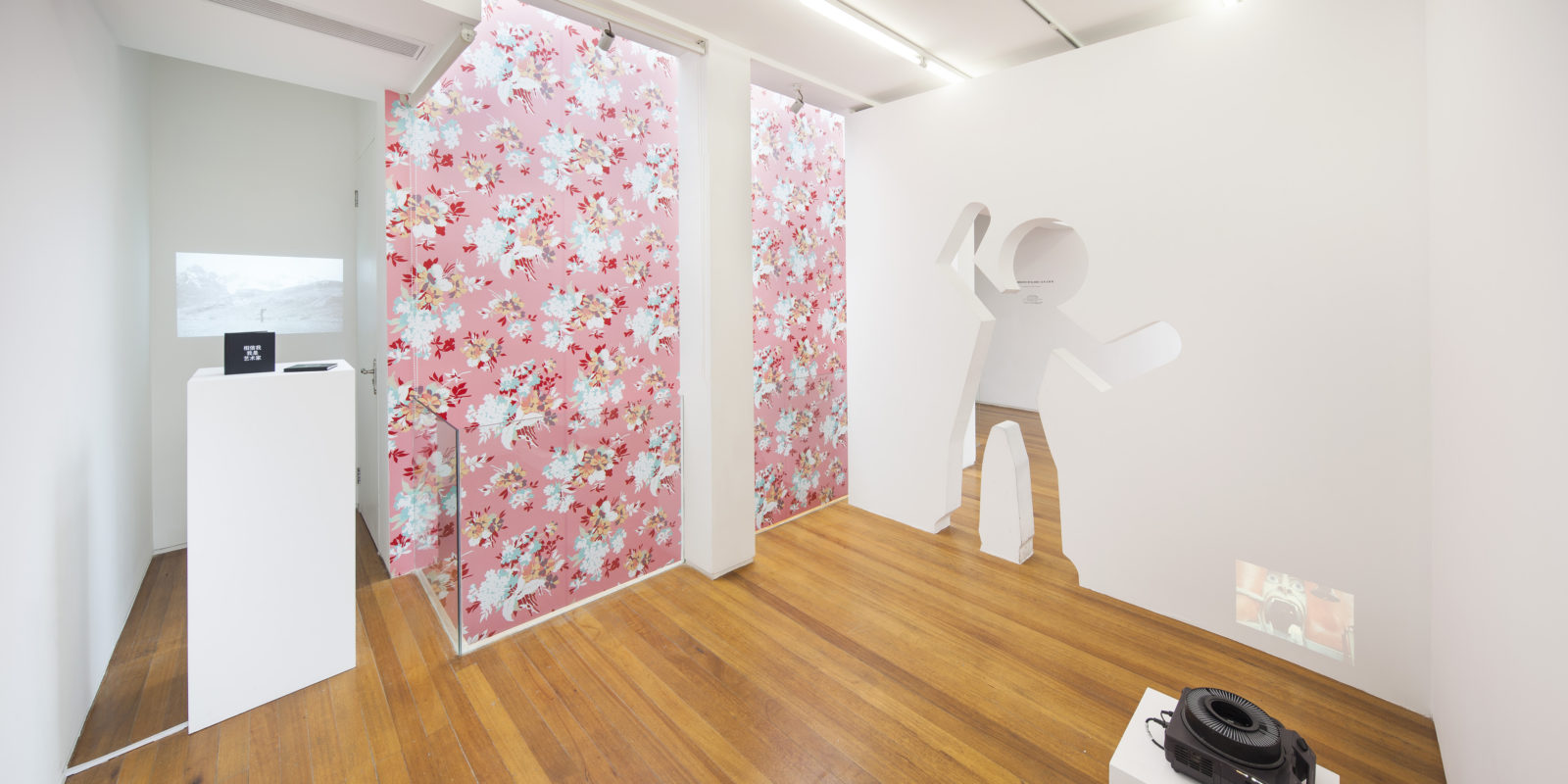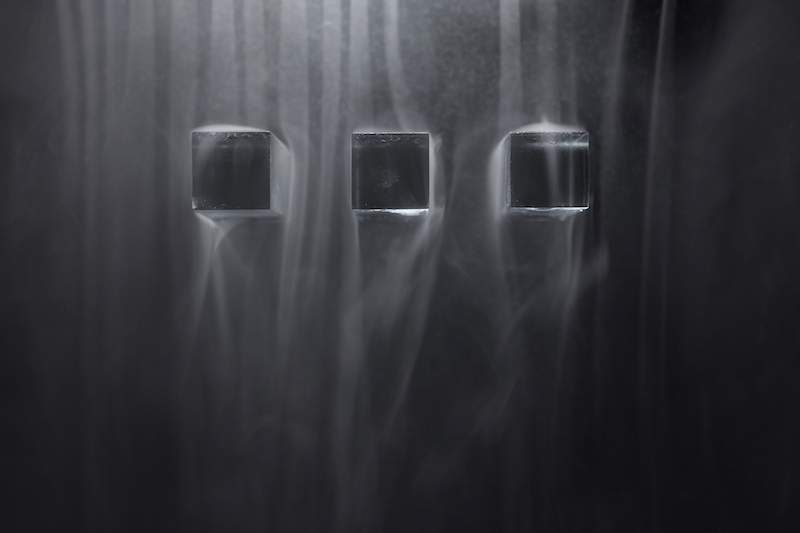
Lester has a background in experimental cinema, but while many of his works have a cinematic feel to them they often exist in three dimensions as ambitious installations which are also influenced by architecture, music, performance, sculpture and, in recent years, death. Death is the central theme of
Death is the central theme of Dwelling Kappiri Spirits, which is currently showing as part of the Kochi-Muziris Biennale, and follows on from a series of works which began with Melancholia in Arcadia. Within this installation, a floating room captures a non-existent breeze, with curtains billowing and a cigar left burning. Dwelling Kappiri Spirits resonates on both a cultural and a personal level for the artist, who commemorated the passing of a friend and fellow artist within the work.
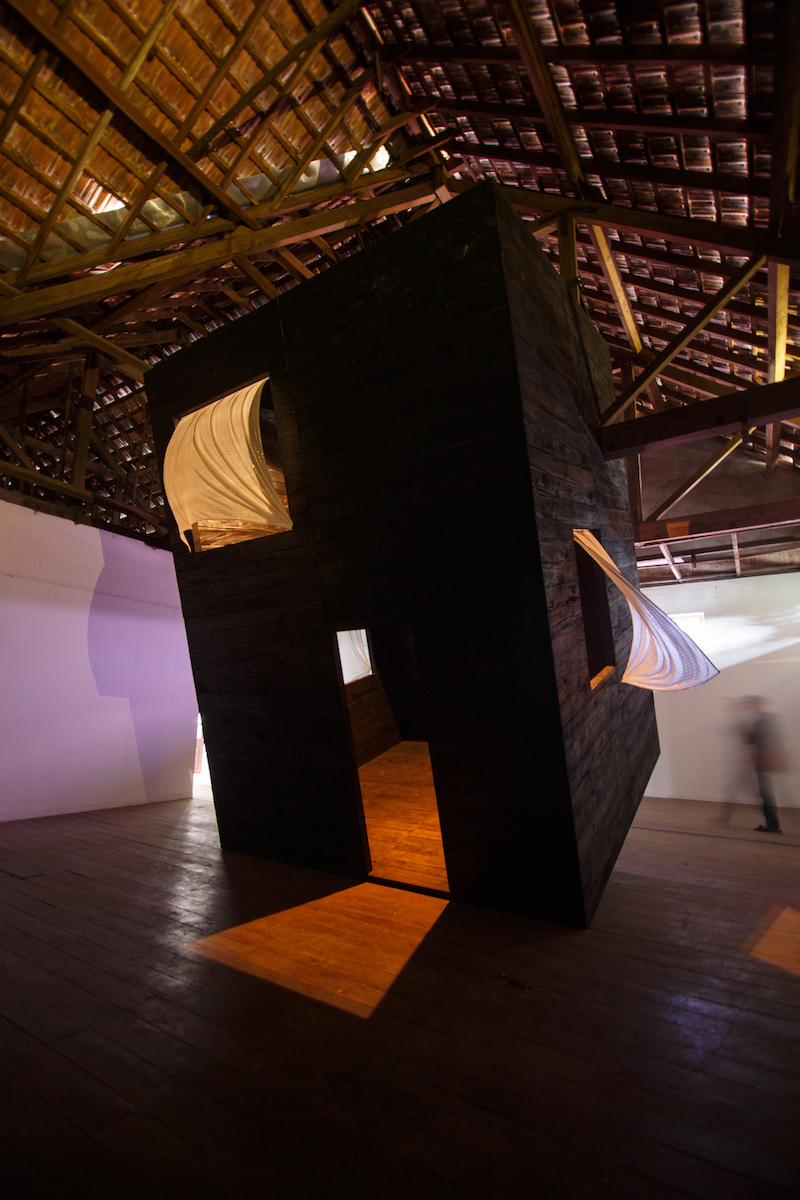
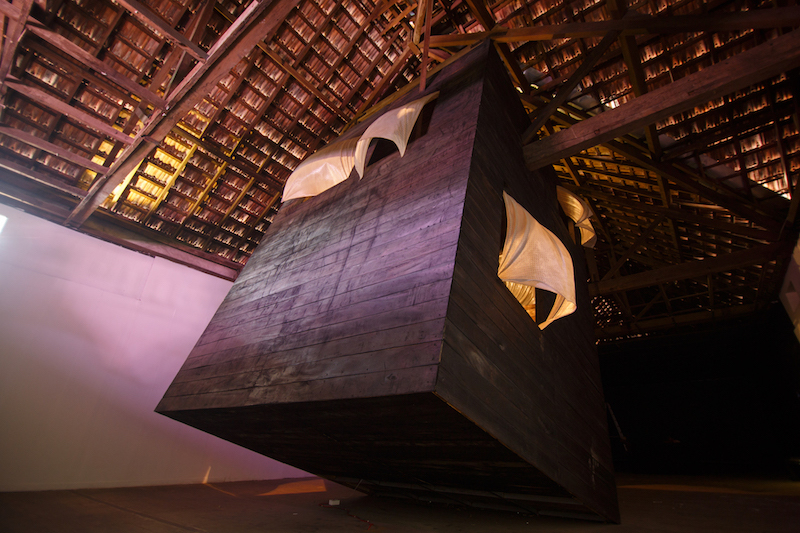
Gabriel Lester, Dwelling Kappiri Spirits, 2016
Can you tell me a bit about the work you’re currently showing at Kochi-Muziris Biennale and how the piece responds to the title Forming in the Pupil of an Eye?
The art installation with frozen curtains, like the one I made for the Kochi Biennale, has a long-standing history in my practice. The very origins of this work, so also the work in Kochi, is the notion of a moment in time, a frozen moment in time as it were, between life and death. In my family tradition whenever someone passes away, almost immediately the windows of the room will be opened so that the soul may travel from the earth to the heavens. I have captured exactly this moment in a series of works, starting with Melancholia in Arcadia (2010).
For the Kochi biennale, I revisited this body of work, this ritual if you like, by looking into the local myths and history, and was immediately inspired by those souls of Kappiri spirits still wandering around. These are the souls of African slaves that were once killed by the Portuguese, so their souls would protect the treasures they had hid from the Dutch who concurred Kochi in 1662. The local people believe that these souls are still wandering around and in order to alter these spirits, they light cigars on dedicated shrines.
The fact that this is strongly linked to the country of my origin, the Netherlands, is one of those coincidences that I believe determines much of an artistic practice, being that sometimes one chooses a topic, but equally the topic can choose the artist. As such I believe the spirits found me.
As for how the piece responds to the title Forming in the Pupil of an Eye, I could say that the entire set up on my installation, the billowing curtains frozen in time, the tilting house as if tumbling and the eternal cigar smoking, proposes ideas to form as a result of perception. One imagines movement and time, through the way these have been halted in the installation. But in all honesty, titles of exhibitions are ways to frame a collection of ideas, rather than the artworks becoming illustrations of such titles
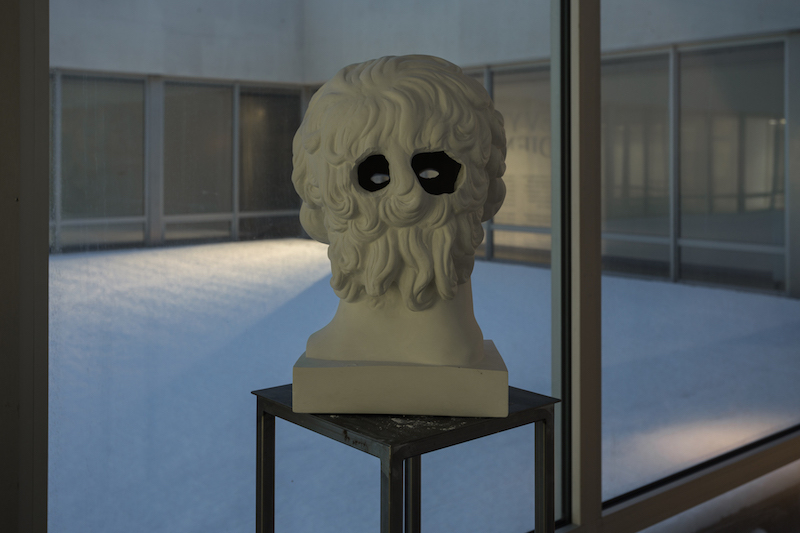
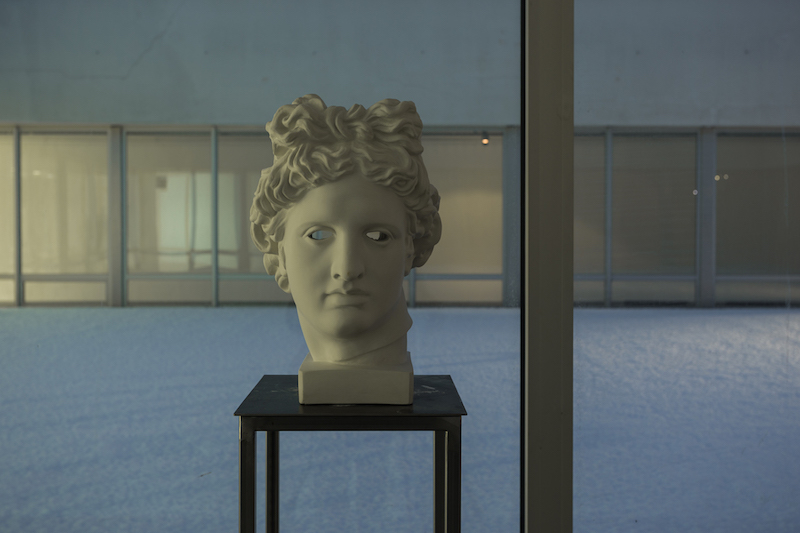
The piece addresses death, in this case, a personal death for you. Was this something you knew you wanted to include from the beginning or was it an element that came through on a more subconscious level as you worked?
In this case, I was actually requested to continue with the work I started some years ago, Melancholia in Arcadia. So I was really travelling a road I have taken before and meanwhile looking for new impulses and forms. As a matter of fact the subject of death, or life, is something very present in my work. I have always been fascinated by things that appear and disappear, by being and not being. Earlier in my work, I wasn’t aware to what degree the subject was present. Later on, it did gain prominence as I started to communicate with both the world of the living and dead. I think an artist can do such a thing in a very special way, unlike religion or other dogma. Addressing the subject of life, death and afterlife is something I feel is important to investigate and is a very rich subject.

You work across many disciplines. Is there one that you feel most at home with, or that you often turn to when beginning to form ideas?
My background is experimental cinema. When you think about cinema, and I’m not the first person to mention this, of course, it is an art form that actually embraces all art forms. Cinema has also been referred to as the impure media, exactly because it’s never just cinema–it’s always a combination of media and art forms. Thus cinema is photography, literature, theatre, sound, light, scenography, choreography and so forth. My art is in many ways like cinema, always a combination of different art forms. If I have to mention the most important art forms to my practice, I’d have to say music, cinema, literature in architecture–and in that order.
You often work to a vast scale, both in size and ambition. While forming works, do you have many planning or sketching stages and is the development process quite free or do you have clear ideas of the direction a work will take?
Most of my ideas start with an essence, something that completely makes sense to me. Such a first thought has to be so powerful, that whatever happens after will only enrich it. I guess this would be the stage of the basic concept, where an idea is so clear and strong for me that I want to make it and start thinking about its form. Then, depending of course on the kind of media that I’m using, it does need a lot of stages and it does need a lot of sketching. I have people that work for me, people that are actually good at visualizing my ideas. It’s never immediately spot on but little by little things to do tend to evolve into the final form I envision.
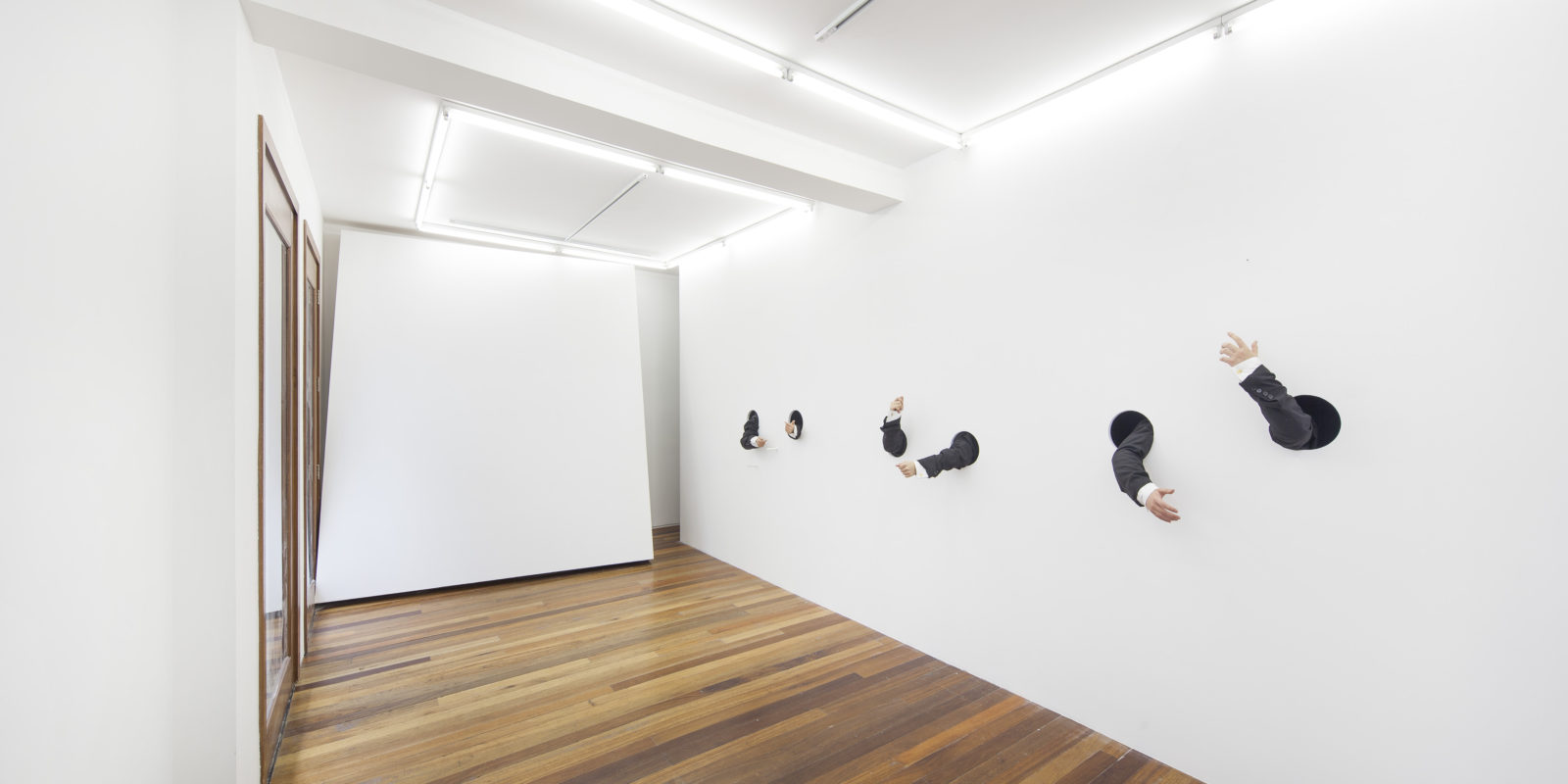
What’s next for you in 2017?
For this year I have a number of exhibitions planned. Last Friday, 20 January, the Frans Hals Museum in Harlem opened an exhibit of a work they have acquired, called How to Act. The next thing after that will be a solo show on 13 April at my gallery in New York, the RyanLee gallery. Then 1 May Big Social will open at a museum in Groningen. Here I will show a number of new films in an architectural setting I will design. Then the rest of the year has a number of projects and possibly a solo show at my Shanghai gallery Leo Xu at the end of the year. Let’s see, there’s always very many things to do, fortunately. And then, of course, I teach at the Rietveld Academy in Amsterdam. Oh and not to forget, a number of commissions with my company PolyLester, eleven new sculptures for the University of Sport Science in Oslo and a small little square in the south of the Netherlands.
